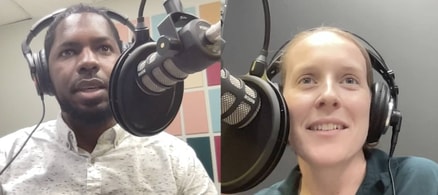Nearly a fifth of math study will cover fin lit

Until the recent announcement, Ontario's Grade 9 math curriculum hadn’t been altered in any significant way since 2005. Considering how differently the world operates now, and how much of it depends on numbers — the algorithms, the data analysis, the coding — a new math program is likely long overdue.
“The world has changed, the economy has changed and so should the curriculum that inspires and informs our children,” Ontario Education Minister Stephen Lecce says in a video unveiling the new math guidelines that will be introduced in the fall.
Both in the video and during a news conference after the program's livestream debut, Lecce repeatedly described the new curriculum as featuring a “heavy emphasis on financial literacy." That might be a bit of a stretch.
Financial literacy is just one of the six official strands that make up the new Grade 9 math plan. That works out to about 17% of the whole, if each strand gets the same amount of attention.
That may not qualify as heavy emphasis, but it's a start. Where would your finances be today if you'd spent almost 20% of your ninth grade math classes learning how to manage debt and prioritize your spending?
Unexpected vet bills don’t have to break the bank
Life with pets is unpredictable, but there are ways to prepare for the unexpected.
Fetch Insurance offers coverage for treatment of accidents, illnesses, prescriptions drugs, emergency care and more.
Plus, their optional wellness plan covers things like routine vet trips, grooming and training costs, if you want to give your pet the all-star treatment while you protect your bank account.
Get A QuoteSkills that will 'set students apart'

As Lecce explains in the video, the new math program is intended to teach practical skills that will eventually help students fare better as independent adults and job seekers.
According to the curriculum guide, students will "extend their financial literacy knowledge to answer questions related to appreciation and depreciation, and explain how budgets can be modified based on changes in circumstances."
The Grade 9ers also will study the effects of different interest rates, down payments and other factors associated with obtaining goods and services, like mortgages.
"These are life skills that are going to set students apart," Lecce says.
The program is non-"streamed" and will be available to all students. That could be a major plus for Ontario's lower-income and minority students, who have been disproportionately streamed away from university-track credits in the Ontario education system for decades.
The hope is the curriculum will provide marginalized kids with the knowledge and confidence to engage with a financial system that has long ignored the needs of their communities.
Cooper says that in addition to the importance of saving and protecting their credit scores, she wants children to learn the impact different types of borrowing can have on their overall financial health. Incurring a reasonable amount of mortgage debt for a durable asset like a home, for example, has vastly different implications than using high-interest credit cards to pay for assets that may have no long-term value.
It's impossible to know if Cooper's advice for 15-year olds — always spend less than you earn by having 10% of your income automatically funnelled into savings — is a specific lesson students will be taught, or if they'll be told that buying a home by the time they're adults will require a down payment of at least $200,000.
That's a lot for any kid — or adult — to wrap their head around.
Sponsored
Trade Smarter, Today
With CIBC Investor's Edge, kick-start your portfolio with 100 free trades and up to $4,500 cash back.






